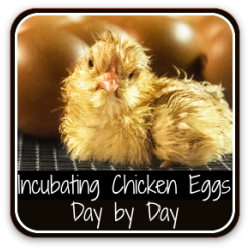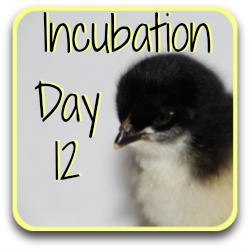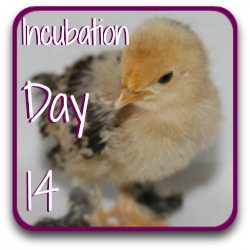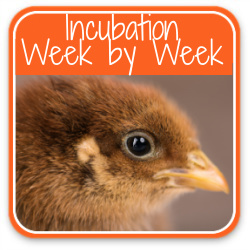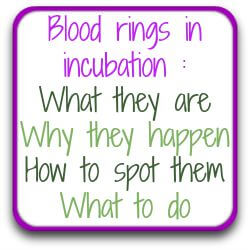- Home
- Incubation day by day
- Day 13
Incubating chicken eggs for beginners: day 13.
Eight days from hatch, what's happening in the eggs at day 13 of incubation?
We have now seen all the new developments in the embryo. From now on, we're simply watching the growth of the different elements.
Incubating eggs for beginners can be a stressful experience. Remember that develop at different speeds. If you don't see exactly the same progress as in these descriptions, don't panic!
Nature is taking its course, and all will be well.

What's happening in the egg today?
- If we opened the egg today (which, of course, would kill the embryo!) we'd be able to see a lot of down along the chick's spine, and one or two claws.
- The yolk now contains several very large blood vessels which the growing embryo relies on for increasing levels of oxygen.
- We'd also see a tiny slit where the upper and lower eyelids meet. They are both continuing to meet, but haven't quite covered the eyeballs yet.
What's happening to the chick?
- Ever heard of the 'wishbone' of a chicken? It's formed by the left and right-hand collarbones coming together. This is one of the major processes going on with the growing chick today.
Please note: the image below is a commissioned piece and is subject to international copyright laws. I am the sole copyright owner.
It must not be used, copied or reproduced anywhere without my permission.
Contact me for details and permissions for this and all other images on this page.

- There's a lot going on with the legs today. Their scales, which started to develop a few days ago, are now beginning to grow and overlap.
- Tiny claws are forming at the end of the already developing feet.
- The chick's skeleton is almost completely formed. From now on, the bones will require increasing amounts of calcium, taken from the shell.
- The downy wing feathers are also developing. These will grow into wing feathers very quickly after the chicks have hatched.
- There's so much bone development now that calcium is constantly being taken from the shell. This is why it's so important to choose eggs for hatching from hens who have been properly nourished.
What can we see if we candle the egg at day 13?
Incubating chicken eggs: for beginners, it can be hard to know what to look for at this stage – it's getting much harder to see detail.
With a good candler it's possible to make out the shape of the chick and to see some large blood vessels, most of which are visible in the lighter area of the egg.
Below is one of my cream-coloured Wyandotte eggs, candled at day 13. It's still possible to see the eye, and the chick's curved spine is now obvious.
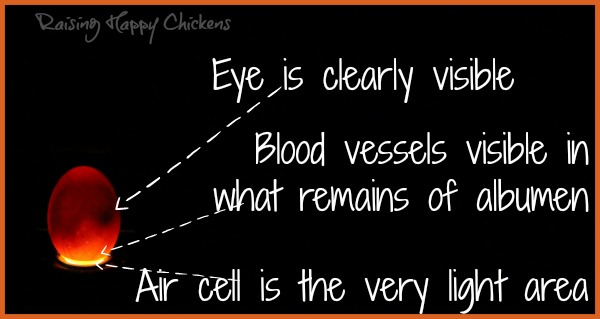
Changing the saturation slightly on the photograph helps us to see that at this stage of incubation the albumen (the white of the egg) has been more or less subsumed by the yolk.
In the image below, the yolk is the darker red area while the albumen is the small, pinkish area directly underneath it.
With a very strong candler it's possible now to see the aorta – the large blood vessel running along the edge of the spine.
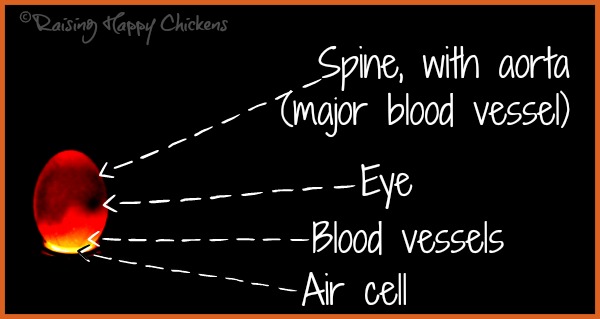
What should we be doing at day 13?
Exactly the same as we have been doing since day 1! Keep the temperature and humidity constant and keep turning those eggs!
If you're unsure about what that means, take some time to return to the start of this incubating chicken eggs for beginners series.
Apart from that – relax and have patience. We only have a few more days to go!
Can anything go wrong at this stage?
The period between days 13 and 18 is a time to relax. If the incubated eggs have reached this stage, there's not much that can go wrong.
Even if there's an electricity cut, eggs at this point can withstand a loss of warmth for several hours before it will have any detrimental effect. Just wrap your incubator in a duvet or blanket, leaving a space for oxygen to be able to enter.
Incubating chicken eggs for beginners: question of the day.
I have some dark coloured Marans eggs in my incubator but I can't see inside them when I'm candling. What shall I do?
Even with a high intensity candler, dark shelled eggs like the Marans and Welsummer are notoriously difficult to candle. The shell has a very dark pigment and seeing the chick inside them is often difficult, if not impossible.
The best way to tell whether there is development is by making a note of the air cell at different stages of incubation. Generally speaking, if the embryo is growing the air cell will also grow.
The photo below is one of my fertile Marans eggs, candled at day 13.
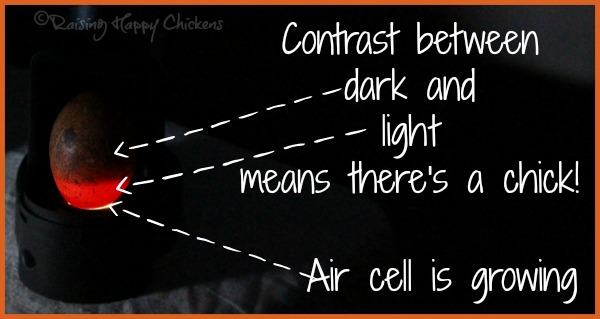
Although it's not possible to see any detail, the fact that the top is dark and the bottom light means there is a chick in there.
There's also a growing air cell right at the bottom of the egg.
Taken those two things together means there's definitely a chick in there. And here's how that chick looked when she hatched!
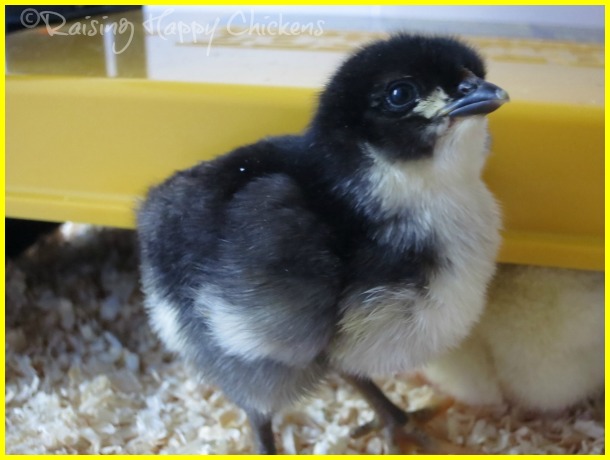
Incubating chicken eggs for beginners: where to now?
If you need to go right back to the start of this series, use the first button link below. To refresh your memory about yesterday, use the day 12 button and to move forward to the next day in the process, click day 14.
Some helpful related pages.
Sources.
A lot of "facts" you'll find on the internet are often people's individual views, based on inaccurate information repeated from poor quality sources.
The information I provide in this article and others is based on both my own experience of incubating and hatching chicken eggs every year for over 13 years, but on evidenced facts from scientific, peer-reviewed research and books from highly respected and experienced poultry keepers such as Gail Damerow.
Some of the trusted sources I have used in this article are these.
Avitronics: Heart Rates. Pub. Avian ID, 2020.
Damerow, Gail: Hatching and Brooding Your Own Chicks. Pub. Storey, 2013. See my review, here.
Hall, C., et al: A new candling procedure for thick and opaque eggs and its application to avian conservation management. Pub. Journal of Zoobiology, 2022.
Hamburger, V and Hamilton, H L: A series of normal stages in the development of the chick embryo. Pub. Journal of Morphology, 1951.
Leonor, H., and Chaveiro, S: The Effect of Candling on the Hatchability of Eggs from Broiler Breeder Hens. Pub. Journal of Applied Poultry Research, 1993.
Phuphanin, A., et al: Smartphone-Based Device for Non-Invasive Heart-Rate Measurement of Chicken Embryos. Pub. National Center for Biotechnology Information, 2019.
Vargas, R., et al: Egg Candling Analysis Equipment Design: A Safety Solution. Pub. Journal of Social and Behavioural Sciences, 2018.
Wu et al: Egg fertility and reduced egg fertility, hatching success, and larval survival. Pub. Science Direct, 2003.
- Home
- Incubation day by day
- Day 13
